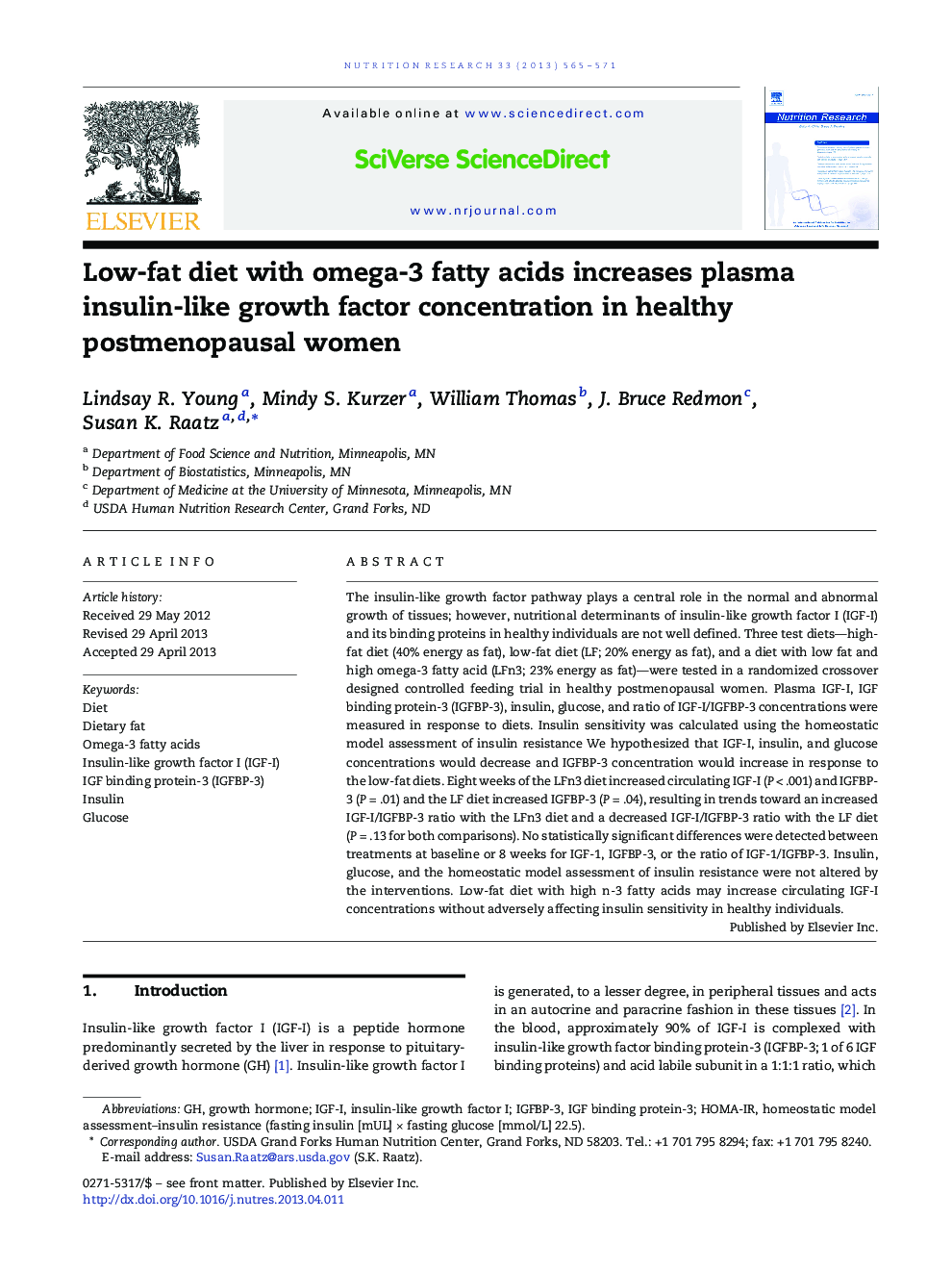| Article ID | Journal | Published Year | Pages | File Type |
|---|---|---|---|---|
| 2808980 | Nutrition Research | 2013 | 7 Pages |
The insulin-like growth factor pathway plays a central role in the normal and abnormal growth of tissues; however, nutritional determinants of insulin-like growth factor I (IGF-I) and its binding proteins in healthy individuals are not well defined. Three test diets—high-fat diet (40% energy as fat), low-fat diet (LF; 20% energy as fat), and a diet with low fat and high omega-3 fatty acid (LFn3; 23% energy as fat)—were tested in a randomized crossover designed controlled feeding trial in healthy postmenopausal women. Plasma IGF-I, IGF binding protein-3 (IGFBP-3), insulin, glucose, and ratio of IGF-I/IGFBP-3 concentrations were measured in response to diets. Insulin sensitivity was calculated using the homeostatic model assessment of insulin resistance We hypothesized that IGF-I, insulin, and glucose concentrations would decrease and IGFBP-3 concentration would increase in response to the low-fat diets. Eight weeks of the LFn3 diet increased circulating IGF-I (P < .001) and IGFBP-3 (P = .01) and the LF diet increased IGFBP-3 (P = .04), resulting in trends toward an increased IGF-I/IGFBP-3 ratio with the LFn3 diet and a decreased IGF-I/IGFBP-3 ratio with the LF diet (P = .13 for both comparisons). No statistically significant differences were detected between treatments at baseline or 8 weeks for IGF-1, IGFBP-3, or the ratio of IGF-1/IGFBP-3. Insulin, glucose, and the homeostatic model assessment of insulin resistance were not altered by the interventions. Low-fat diet with high n-3 fatty acids may increase circulating IGF-I concentrations without adversely affecting insulin sensitivity in healthy individuals.
